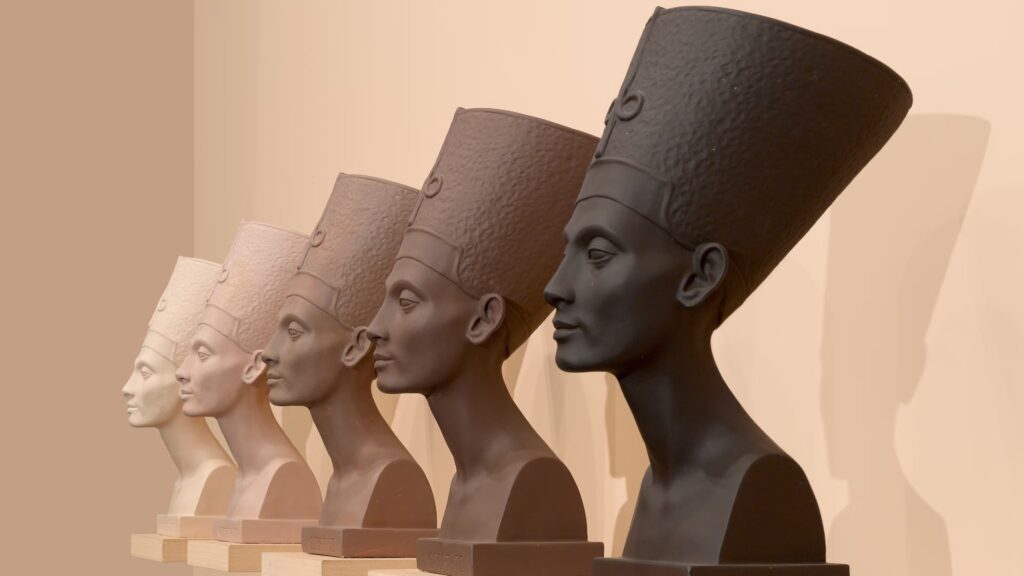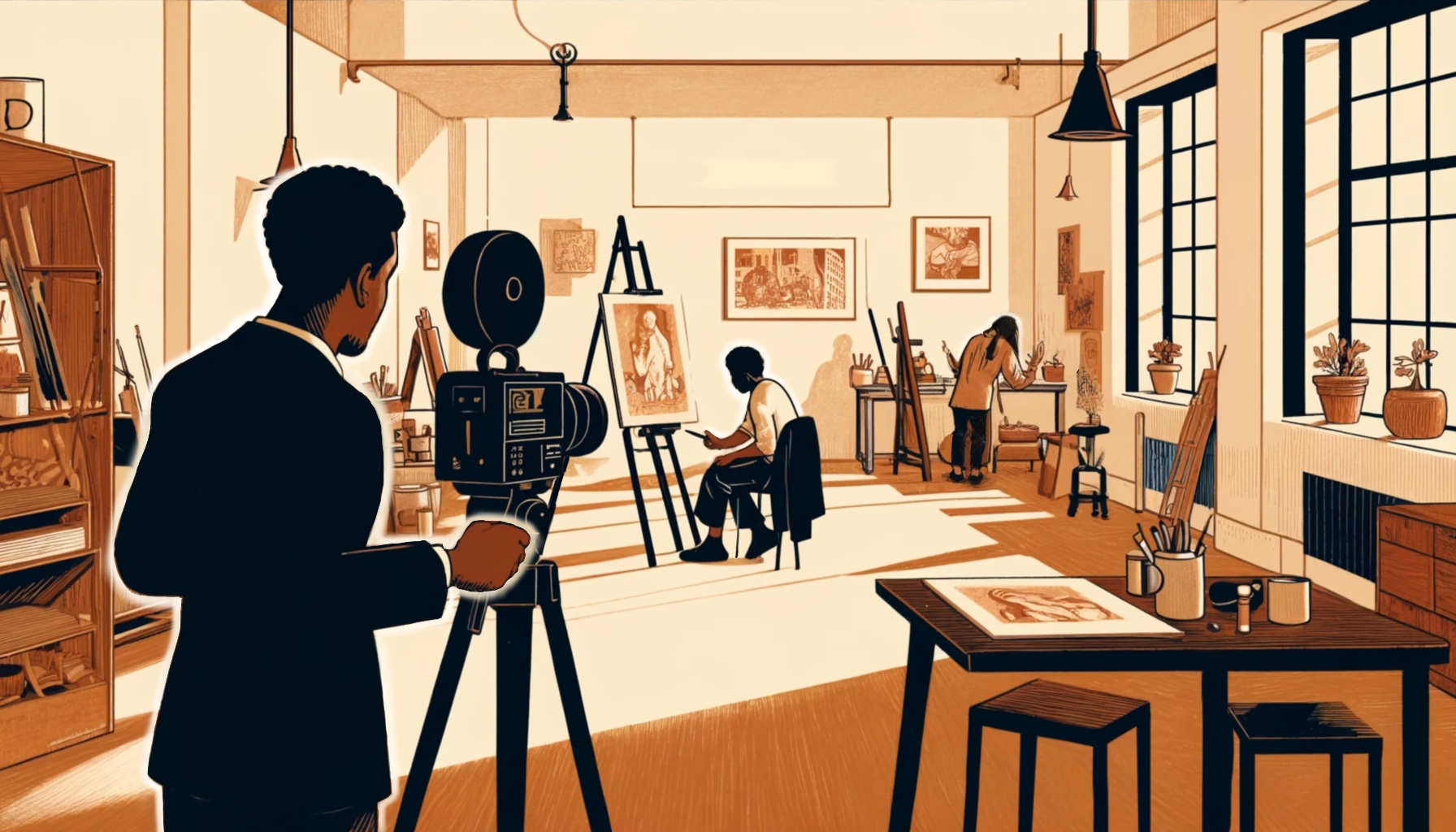Reclaiming Ancient Egypt: Dream or Distraction for Black Art?
The Met’s ‘Flight into Egypt’ exhibition looks at how Black artists honor Ancient Egypt while addressing its modern relevance.

Fred Wilson, Grey Area (Brown Version), 1993. Brooklyn Museum, Bequest of William K. Jacobs, Jr., and Richard J. Kempe by exchange (2008.6a–j). Courtesy of The Metropolitan Museum of Art.
Black artists have long drawn inspiration from Ancient Egypt, a civilization often seen as a symbol of Black greatness. But is this connection a celebration of heritage, or does it risk idealizing the past at the expense of contemporary issues?
What does focusing on an ancient empire mean for modern Black identity?
For centuries, Black artists have looked to Ancient Egypt as a source of empowerment. The legacy of the pharaohs and pyramids stands as a counter-narrative to colonialist depictions of African inferiority. The allure is clear: these images reflect strength, innovation, and a historical legacy that predates slavery. From painters and sculptors to fashion designers, references to Ancient Egypt continue to appear in Black art across the globe.
This fascination comes to life in the Metropolitan Museum of Art’s new exhibition, Flight into Egypt: Black Artists and Ancient Egypt, 1876–Now. On display until February 17, 2025, the show brings together nearly 200 works spanning visual art, literature, music, and live performances to trace the complex relationship between Black artists and ancient Egypt. Highlights include Henry Ossawa Tanner’s Flight into Egypt (1923), a masterpiece that embodies themes of fugitivity and freedom, and contemporary sculptures that blend Egyptian motifs with bold African textures and hairstyles.
A unique addition to the exhibition is the “Performance Pyramid,” where choreographer Sidra Bell and composer Zekkereya El-magharbel present live pieces inspired by ancient Egyptian traditions. Outside the museum, the “Art in Transit” initiative transforms New York City subway stations into artistic extensions of the exhibit, making these historical themes accessible to a wider public.
Why Ancient Egypt Matters
For many, the draw of Ancient Egypt lies in its power as a cultural reset. Artists use it to stake a claim in world history, countering centuries of erasure. By aligning their work with Ancient Egypt, Black creators can rewrite narratives of African excellence that colonialism tried to suppress.
This sentiment echoes across disciplines. Musicians like Beyoncé have used Egyptian imagery in their videos to convey regality, while Afrofuturist writers often blend the aesthetic with sci-fi worlds. It’s a visual shorthand for power and innovation.
The Risks of Idealization
Yet, critics argue that this reliance on Ancient Egypt can have unintended consequences. As noted in The New York Times, this fascination sometimes creates a “dream” that is more about escaping reality than addressing it.
The critique goes further: by focusing on Egypt, artists might unintentionally reinforce a narrow idea of what constitutes Black excellence. The focus often glosses over other rich African histories, such as the Kingdom of Mali or the Benin Empire, and reduces the diversity of modern Black identity to a single narrative.
“The beauty of modern American Blackness is not a function of sphinxes,” John McWhorter stated. “When creating and burnishing our stories, our myths, our art, we should remember where we really came from.”
There’s also the danger of romanticizing Egypt as a utopia. For many artists, Ancient Egypt represents an imagined past of unbroken Black greatness—but some scholars remind us that it was also a place of social hierarchies and conflicts.
A Balancing Act
So where does this leave Black art? For many creators, it’s about balance. Ancient Egypt serves as a foundation, a reference point to explore timeless themes like resilience and power. At the same time, contemporary artists are finding ways to engage with the present—whether through critiques of systemic racism or explorations of gender and identity.
Flight into Egypt: Black Artists and Ancient Egypt, 1876–Now stands as a testament to this balancing act. Through its exploration of past and present, the exhibition encourages viewers to reflect on how cultural heritage can both empower and challenge. It asks an essential question: What can ancient history teach us about the complexities of Black identity today?
What are your thoughts on balancing historical inspiration with modern innovation in Black art?
Source: The New York Times, Artnet, and The Metropolitan Museum of Art
 Smithsonian’s National Museum of African Art Appoints New Leadership
Smithsonian’s National Museum of African Art Appoints New Leadership The $6 Million Banana: What It Says About Art, Wealth, and Opportunity
The $6 Million Banana: What It Says About Art, Wealth, and Opportunity Creative Freedom vs. Copyright: The Legal Standoff Between Deborah Roberts and Lynthia Edwards on Collage Art
Creative Freedom vs. Copyright: The Legal Standoff Between Deborah Roberts and Lynthia Edwards on Collage Art John Campbell’s ‘Who’s Behind Black Art’ Series Transforms Art Media
John Campbell’s ‘Who’s Behind Black Art’ Series Transforms Art Media Alicia Keys and Swizz Beatz Uncover Black Art with GIANTS Exhibition
Alicia Keys and Swizz Beatz Uncover Black Art with GIANTS Exhibition

